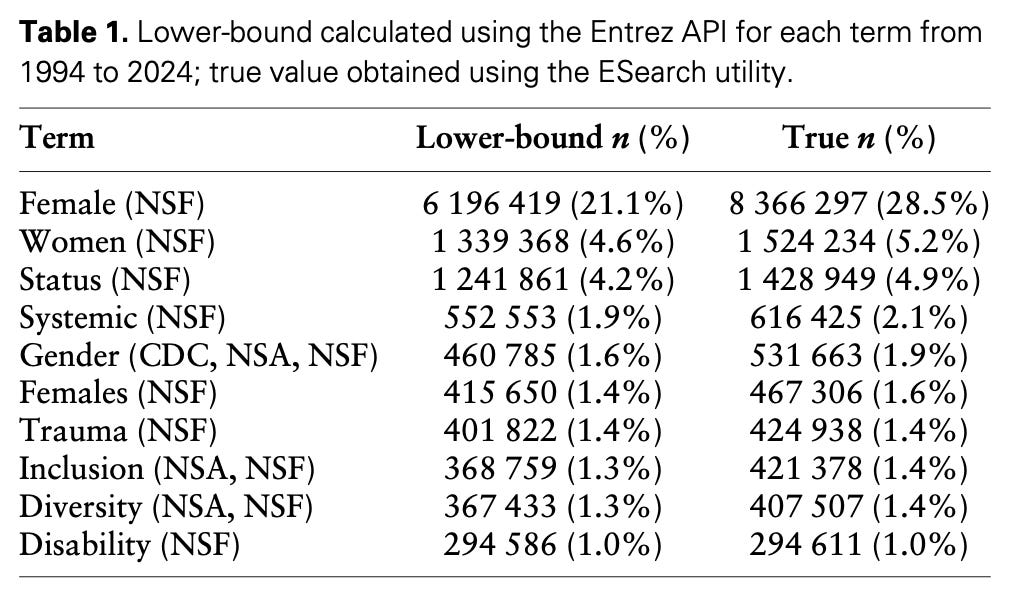How Many Books (Publications) Would We Burn?
The effect of purging "dangerous" terms from the medical literature.
The U.S. has been blessed by new executive direction, and a product of this blessing has been the Executive Orders “Ending Radical And Wasteful Government DEI Programs And Preferencing” and “Defending Women From Gender Ideology Extremism And Restoring Biological Truth To The Federal Government”. Accompanying these orders, we have seen the publication of lists of restricted terms or phrases subjecting government work to internal review.
This simple study takes these lists of terms – 12 for the CDC, 111 for the NSF, and 27 for the NSA – and analyzes the PubMed database to determine the potential impact from these reviews on the body of published literature. Their results are best encapsulated in this table:
The authors published the topline estimate of 36.3% of biomedical literature would be flagged for potential review, after accounting for potential overlap between search terms.
While there’s no question the ideological purge of the biomedical sciences is horrifying, I don’t think this estimate should be conflated to represent the true scope of potential censorship. The terms “female” and “women” represent the vast majority of the “problematic” search terms, and it is unlikely all of these articles would be whitewashed as ideologically inappropriate.
That said, as can be seen from the list above, a few terms – gender, inclusion, diversity – each represent ~1-2% of the published literature. Along with the relevant subject matter contained across all search terms, it is reasonable to guess at least 10% of published literature may run afoul of new restrictions. That said, these data represent PubMed as a whole, not the research output of federally-funded grants or institutions. It would be yet another further step to estimate the true impact of this new government intrusion on the body of future published research.

